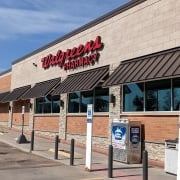Case Study #14 – AIRNYC: Short-Term Rental Acquisition (Case Only)
For our 14th case study, we explore rising investment in short-term rentals with a challenging, real-world acquisition analysis. These case studies are designed to help you practice and perfect your real estate financial modeling skills. This AIRNYC case study places you in the role of an Investment Analyst at A.CRE Capital, a firm specializing in acquiring and repositioning high-yield short-term rental assets in prime urban and resort markets.
In this scenario, you’ll evaluate the financial feasibility of acquiring and repositioning a five-unit brownstone in Manhattan’s East Village. Amidst a resurgence in urban travel and experiential lodging demand, the opportunity presents strong upside potential—but also heightened regulatory and operational risks.

A beautifully renovated brownstone in East Village, Manhattan, New York, designed as a luxury short-term rental property.
As with all A.CRE case studies, the names and some details have been adjusted for confidentiality, but the fundamentals and modeling challenges reflect real-world deals. Whether you’re preparing for a role in acquisitions, capital markets, or working on your modeling proficiency for interviews, this case simulates the kinds of decisions and analysis required in today’s investment landscape.
Are you an Accelerator Advanced member? The solution to this insightful case is covered in the Career Advancement Endorsement of the program. Not yet enrolled? Join the A.CRE Accelerator—the leading training program used by top firms and universities to train the next generation of commercial real estate professionals.
AIRNYC – The Background
You are an Investment Analyst at A.CRE Capital, a real estate investment fund specializing in acquiring and optimizing high-yield short-term rental properties across major urban and resort destinations. The firm’s strategy is to identify undervalued multifamily or single-unit properties, reposition them into premium short-term rentals (e.g., Airbnb-style), and exit within 10 years at a stabilized valuation.
Given the post-pandemic tourism boom, New York City has seen a surge in demand for well-located, professionally managed short-term rentals despite increasing regulatory hurdles. A.CRE Capital is considering acquiring a four-unit brownstone in Manhattan’s East Village to convert it into a luxury, fully automated, short-term rental operation.
Your task is to analyze the financial feasibility of this investment, structure an optimal equity and debt financing strategy, and assess risk factors that could impact returns.
AIRNYC – The Details
Acquisition & Market Assumptions
- Property Type: 5-unit brownstone, 5,200 SF
- Location: East Village, Manhattan, NYC
- Acquisition Price: $4.5 million
- Acquisition Closing Costs: 2% of purchase price
- Planned Renovation & Furnishing Cost: $700,000
- Total Project Cost: $5.2 million (Acquisition + Renovation)
- Holding Period: 10 years
Revenue Assumptions
- Nightly Rate (Average across 5 units): $400 per night
- Occupancy Rate: Year 1: 65%, Year 2: 75%, Year 3-10: 80%
- Annual Revenue Growth: 3% per year
Operating Expenses
- Property Taxes: 1.2% of acquisition price per year
- Insurance: $15,000 per year
- Utilities & Maintenance: $40,000 per year
- Platform & Management Fees: 15% of revenue
- Cleaning & Housekeeping: $22500 ($75 per turnover – average of 5 turnovers per unit per month)
- CapEx Reserve: $15,000 per year
Debt Assumptions
- Loan-to-Cost Ratio (LTC): 70%
- Interest Rate: 6.25% fixed
- Loan Term: 10 years
- Amortization: 30 years
- Interest-only payments: 3 years
- Loan Fees: 1% of loan amount
Exit Assumptions
AIRNYC – The Task
1) Investment Return Metrics
- Calculate the investment’s unlevered and levered internal rates of return (IRR), along with the corresponding equity multiple.
- Determine the cash-on-cash return to evaluate the investment’s annual income relative to the equity invested.
- Also, analyze key debt metrics, including the Debt Service Coverage Ratio (DSCR) and Debt Yield.
2) Sensitivity Analysis
Build sensitivity tables showing the results for the Levered IRR and Levered Equity Multiple with the following variables:
- Exit Cap Rate vs Hold Period
- Exit Cap Rate vs Purchase Price
- Loan to Cost vs Cost of Debt
Do you want to create a real estate financial modeling case study that perfectly suits your educational or professional needs? Check out our A.CRE Real Estate Case Studies Creator Assistant!
Download the Short-term Rentals Case PDF
In addition to the web-based case, we’ve created a PDF version to download and use offline. As with our real estate financial models, this case study is offered on a “Pay What You’re Able” basis with no minimum (enter $0 if you’d like) or maximum (your support helps keep the content coming). Just enter a price together with an email address to send the download link to, and then click ‘Continue’.
We occasionally update these cases. Paid contributors will receive lifetime access to the case, and all updates.








